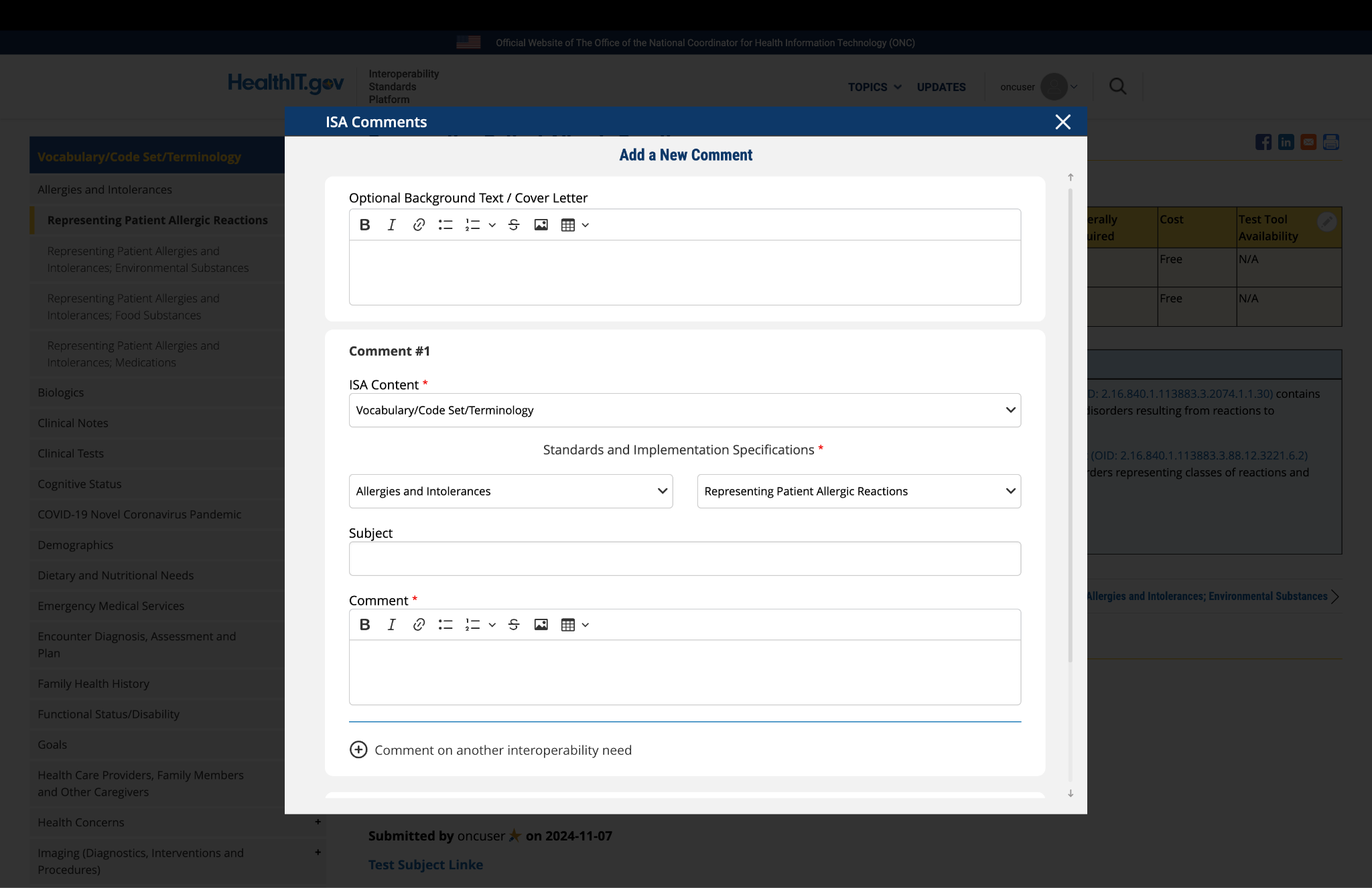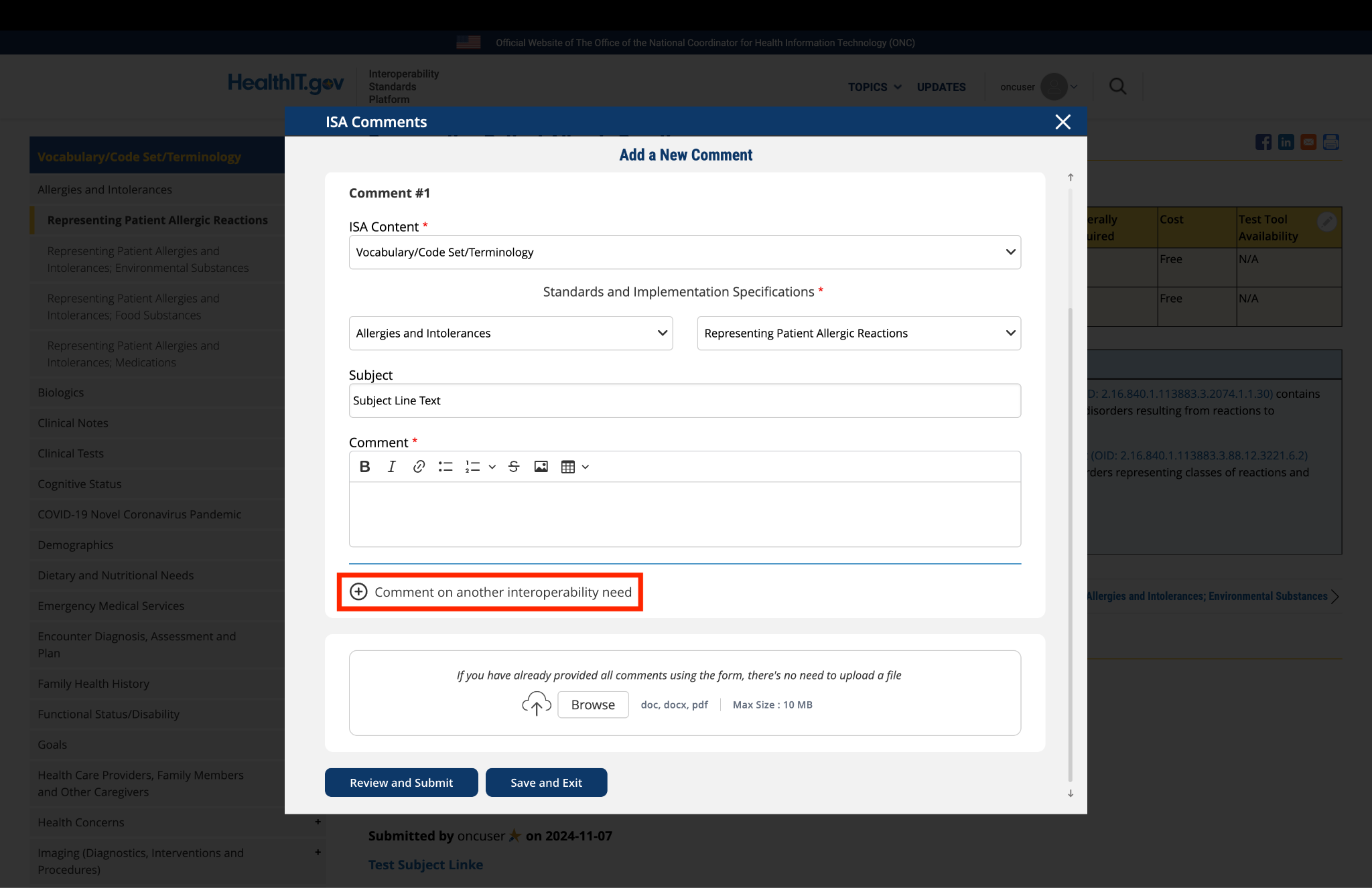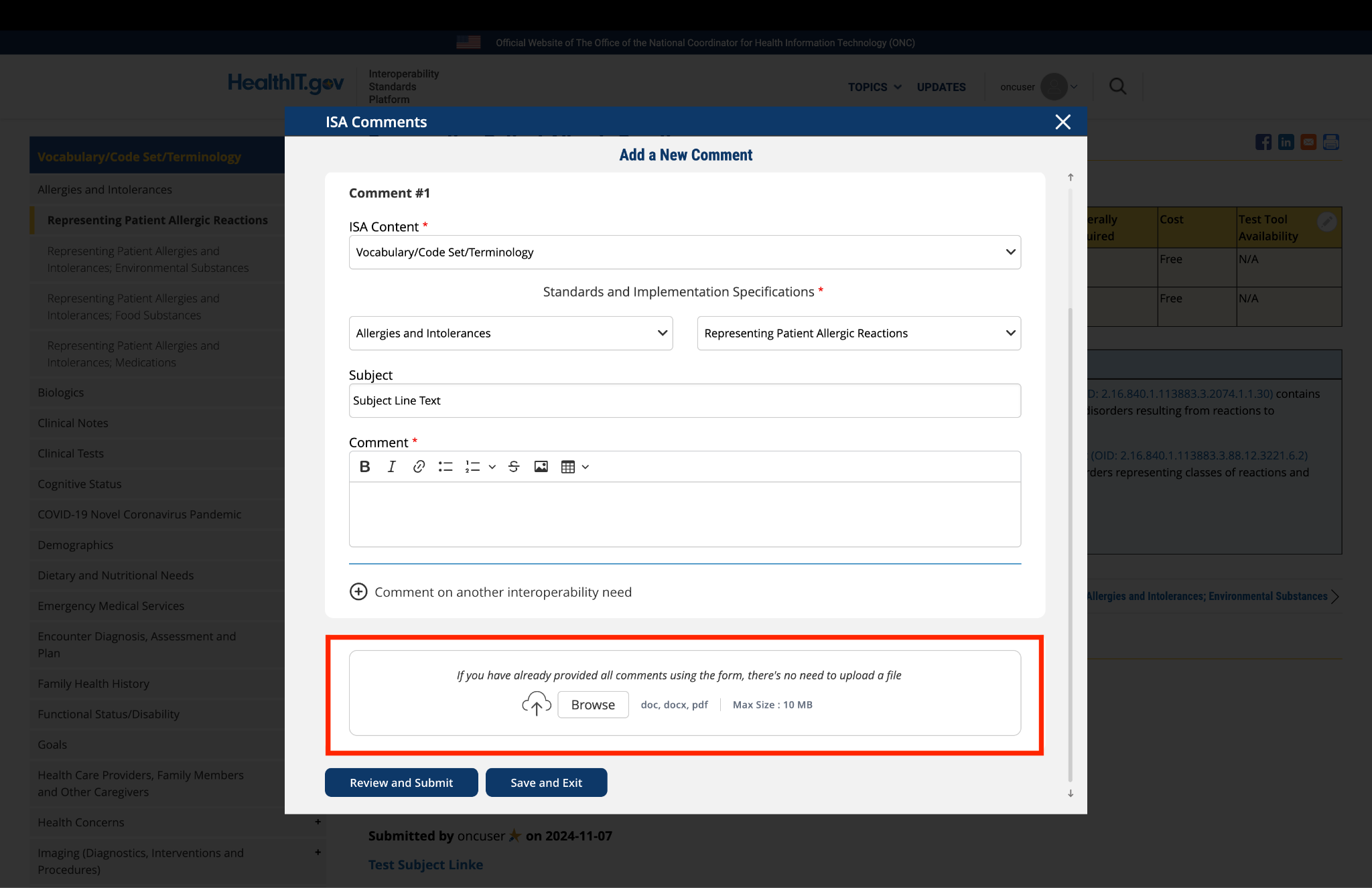| Type | Standard / Implementation Specification | Standards Process Maturity | Implementation Maturity | Adoption Level | Federally required | Cost | Test Tool Availability |
|---|---|---|---|---|---|---|---|
|
Standard for observations
|
Final
|
Production
|
No
|
Free
|
N/A
|
||
|
Emerging Implementation Specification
|
In Development
|
Feedback requested
|
Feedback Requested |
No
|
Free
|
No
|
| Limitations, Dependencies, and Preconditions for Consideration |
Applicable Value Set(s) and Starter Set(s)
|
|---|---|
|
|
Comment
Submitted by pwilson@ncpdp.org on
NCPDP Comments
NCPDP supports ONC’s recommendations.
Submitted by gldickinson on
Preserving Clinical Context
General Comments:
USCDI specifies lots of clinical data classes and data elements
- Resolving to myriad de-coupled fragments
- With vanishingly little focus on:
- Clinical context and vital inter-relationships, e.g., between problems, diagnoses, complaints, symptoms, encounters, allergies, medications, vaccinations, assessments, clinical decisions, orders, results, diagnostic procedures, interventions, observations, treatments/therapies, referrals, consults, protocols, care plans and status...
- Elements and context + purpose of capture: e.g., blood pressure, its measurement (systolic, diastolic), its unit of measure (mm/Hg), its reason for capture, its context of capture (sampling site, sampling method, patient position, at rest/during/post exercise...
It is crucial to consider and determine/resolve how clinical content and context are bound together and preserved in USCDI. The ultimate end user (often a clinician) must be able to readily discern context and inter-relationships – otherwise USCDI places an undue (and often unresolvable) burden on this user. Only the source EHR/HIT system can structure clinical content and context properly. Once data is stuffed into the USCDI framework and related exchange artifact (e.g., FHIR resources) this opportunity is forever lost.
Submitted by mattreid on
The AMA requests that the…
The AMA requests that the Current Procedural Terminology (CPT) code set be added to the standards listed in Section I: Representing Patient Cognitive Status. The CPT code set contains Evaluation and Management code 99483, which identifies a comprehensive cognitive assessment of the patient, including, but not limited to:
- Cognition-focused evaluation,
- Functional assessment, including decision-making capacity,
- Use of standardized instruments for staging of dementia,
- Evaluation of safety,
- Identification of caregivers, and
- Creation of a written care plan.
CPT codes 96105-96146 identify neuro-cognitive assessments and tests, including cognitive performance testing, interactive feedback, neurobehavioral status examination, and neuropsychological testing evaluation services.
Cognitive skills are also identified in the Occupational Therapy Evaluations codes, 97165 – 97167, and Therapeutic Procedures, 97129.
In addition, CPT Category II codes 3720F and 3755F identify assessment and screening for cognitive impairment or dysfunction within the treatment of other clinical conditions.
CPT is a comprehensive and regularly curated uniform language that accurately describes medical, surgical, and diagnostic services and provides for reliable communication among users. It has an extremely robust and mature development process with open and transparent meetings and clinical input from national medical specialties and relevant stakeholders. It is the most widely adopted outpatient procedure code set. Use of the CPT code set is federally required under HIPAA.








Submitted by mattreid on
The AMA requests that the…
The AMA requests that the Current Procedural Terminology (CPT) code set be added to the standards listed in Section I: Representing Patient Cognitive Status. The CPT code set contains Evaluation and Management code 99483, which identifies a comprehensive cognitive assessment and care planning for a patient with a known cognitive impairment. The services performed include:
While the LOINC codes that assess cognitive status and the FHIR use case used to support the exchange of functional and cognitive status assessment information are still in development, the CPT code 99483 is an adopted standard. The CPT code conveys the same or similar information as the LOINC codes for cognitive function (11333-2, 75275-8, and 11332-4), which is currently listed as a standard for this interoperability need.
CPT is a comprehensive and regularly curated uniform language that accurately describes medical, surgical, and diagnostic services and provides for reliable communication among users. It has an extremely robust and mature development process with open and transparent meetings and clinical input from national medical specialties and relevant stakeholders. It is the most widely adopted outpatient procedure code set. Use of the CPT code set is federally required under HIPAA.